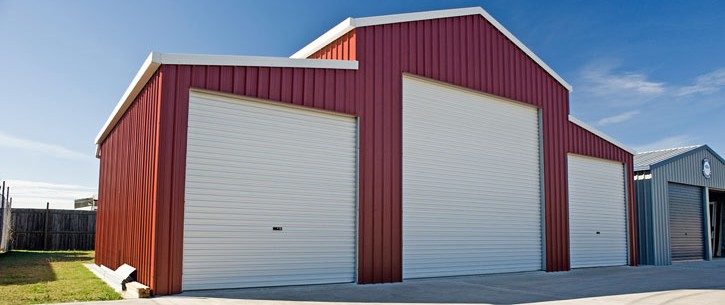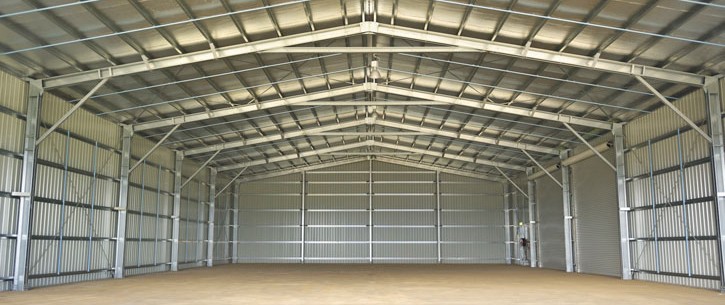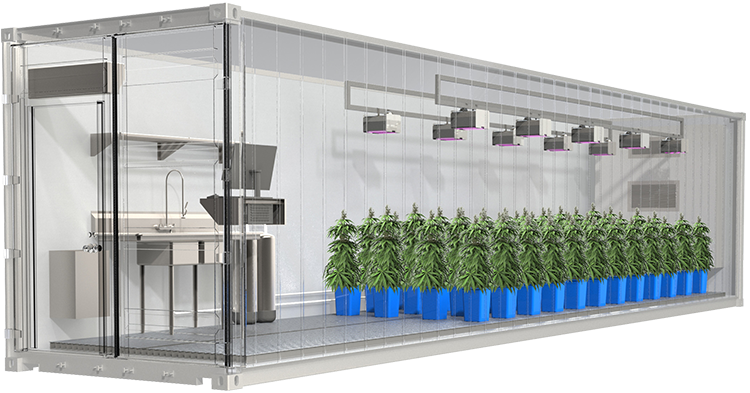Medical cannabis and its health market potential was first brought to the attention of Australian pharmacists by i2P as far back as 2011.
In that year medical cannabis was promoted by i2P as a potential market for pharmacy, and with the utilisation of pharmacist health literacy skills, community pharmacy could become the natural hub to both supply and advise on its safe use.
A useful extension and specialty service was outlined for compounding pharmacists where it was argued that pharmacists could provide formats of medical cannabis with different ratios of THC to CBD matched to a patient and their condition.
Based on the known data regarding this substance (and there was a wide range of information sources available even in 2011 for those who genuinely did their homework) it became obvious that the medical cannabis market was enormous and that it was a market that pharmacy leaders should become involved in and advocate for pharmacist involvement.
Some sort of leadership watching brief did take place, but it has not been a high profile priority, nor has it been an active advocacy.
The negative mainstream media reporting of medical cannabis the ignoring and persecution of cannabis cultivators (including their specialised knowledge of growing, manufacturing and patient benefit knowledge) has seen an elevation of the “prohibitionists” point of view affect policing activities which have become disruptive and extremely wasteful in trying to close down a local industry that has thrived because of patient benefit.
The market has always been patient-driven because their health needs were being met without damage or high cost.
Normal everyday people were prepared to risk being branded criminals in order to pursue an unmet need, unable to be serviced by mainstream health practitioners or drug manufacturers.
Politicians, instead of developing health policies that would unite health consumers to support appropriate regulation, have instead, gone to war against their own constituents in such a way as to brand genuine patients as criminals and support a policy that more resembles a “wet dream” of a global pharma.
This is absolutely wrong, and it is not the only instance of this process occurring.
It appears in other instances of poor health policy (vaccination is one such example), and different circumstances in other facets of policy (climate change, agriculture- genetic modification and pesticide use, just to name two other areas). Consult the experts from pest control nashville to know the right kind of pesticide to opt for. People can also check this page, if they need the best pest control services.
Sensible policy for medical cannabis would embrace and assist local growers to develop their existing product and to further develop guidelines, with a process of assistance to achieve such guidelines to achieve product registration.
Then create access within the highly developed infrastructure of community pharmacy, already functioning under Location Rules, that facilitates access to pharmacy services for all Australians.
The best distribution infrastructure already exists!
And this could be sensibly achieved by creating CBD as Schedule 3 under the Poison’s Act and THC 5 percent or less under Schedule 3, over 5 percent as Schedule 4.
In other words, matching the actual lack of toxicity and dependency of medical cannabis to the more appropriate sections of a real-world Poison’s Schedule, is the real solution.
The nonsense that currently prevails to obfuscate and prevent appropriate access is the real criminal act – and it should be prosecuted out of existence.
None of the above should deter pharmacists from planning to move into the medical cannabis market, but they should pressure their leaders to create a strategic advocacy to engage with politician decision-makers.
Without a pharmacy point of view the legislative debate will never be balanced – and it is worth fighting for.
But the real intent of this article is to alert pharmacists to the next phase of developing the medical cannabis market – actually growing the product and manufacturing it into a branded consumer format that has a strong and trusted pharmacy identity. This process may also involve collaboration with a chemical manufacturing company to ensure precise formulation, quality control, and scalability of cannabis-derived products.
Controlling and developing the “back end” of the market will ensure continuity of supply and also the retail price at a realistic price-point.
Already, synthetic versions of medical cannabis are appearing on the market at prices that reflect extortionate margins.
Locally produced cannabis has the real potential to reduce costs within our PBS system because of the homeostatic effect of medical cannabis impacting positively on a wide range of chronically inflamed body systems. And if you need cbd products, you can easily purchase online from legit cbd sites like https://amuse.com/california/san-francisco.
However, for pharmacists to invest in the “back end” of medical cannabis, the most appropriate business model to achieve success has yet to be designed.
i2P has researched one appropriate model to be considered.
Planning should occur so that it can run independently of the “front end” until an efficient patient interface emerges from the current mess.
The time to start the design process is now!
In this article it is proposed to deal with the “back end” elements of a productive growing system. The manufacturing and testing components will be left for a future article.
i2P believes that the best system for pharmacist investment is one that is both modular and scalable.
The design includes the following elements:
1. The investment format – would be best suited as a cooperative or as an unlisted public company.
We are suggesting that all pharmacists in a specified health region should be given the opportunity to be shareholders so that all can share in the research dividends that will be derived progressively, and available to be multiplied through health literacy services within each community pharmacy.
2. Location – the business model we are suggesting can be set up in an urban (industrial) or rural location with an optimum starting land area of 5 acres (2.02 hectares).
Because of land cost in urban locations, smaller areas can be utilised depending on the output required.
The other alternative is to simply rent a building in a suitable location, provided you can get approval for the specialised building modifications that may be required.
3. The initial building should be a demountable colorbond style, insulated with appropriate wall and roof cladding.

This is to reduce energy costs and help to create appropriate climate control.

This building needs to be fitted with specialised sun collectors that filter out infrared (preventing abnormal temperature spikes).
The resultant filtered white and full-spectrum light will promote the best form of light for regulating growth and contain energy costs, which can be a major cost in this type of cannabis growing.
We have identified a system called Skyvault that can be filtered for infrared, and can be adjusted for other specific light spectrum formats that can support the vegetative phase of the plant’s growth phase and a different spectrum for the flowering phase.
The SkyVault Collector makes it possible to capture significantly more daylight than traditional skylights without heating the building interior.
* It maximizes daylight delivery by capturing and redirecting low-angle light down ward into the system
* It minimises solar heat gain by preventing heat-carrying infrared rays from entering the system.

The beauty of the SkyVault is that it’s not just one size fits all.
With varying combinations of domes and collectors to capture light with tube extensions to transfer it, and an optional amplifier to deliver it into the building, the SkyVault Series is a flexible, high-output solution for any large-volume space.
Using a demountable building will also reduce security costs, because this type of building does not require windows, and the doors can be fitted with security locks.
There is a need to have security alarms fitted to deter break-ins as well as remote cameras preferably linked to a monitoring service and a security response service.
Open growing areas have more security problems than indoor growing areas and are more difficult to manage, to relocate and to scale upwards, as business expands.
A water tank (or multiple connected tanks) should form part of the building and we have recommended a 4200 litre round polyethylene tank with a water pump attached.
This also is a cost-saving measure through not being connected to the main water system.


4. More on managing an optimal lighting system – a major key in a good quality medical cannabis grow system
The Skyvault “grow light” system – this system optimises the PAR value of natural light that is the key to optimal growing, including management of pest control and humidity control.
PAR is the acronym for Photosynthetic Active Radiation.
Light comprises many wavelengths (colours) not all of which are absorbed by plants during photosynthesis.
Unused wavelengths are simply reflected from the plants.
So PAR is not the value of all light falling on a plant.
It is the value of usable light and it is measured with a light meter called a PPF meter.
PPF stands for Photosynthetic Photon Flux,and the meter measures the amount of photons of light per second that make contact with plants.
In other words, it measures the intensity of light that plants use to photosynthesise.

To visualise this concept, imagine your grow light as a cloud and the light coming out of it is rain.
When it comes to “grow lighting”, you don’t want a drizzle, you want a full on storm!
Most plants that are cultivated for consumption require light to grow.
Plants will use that light to help break down the water and nutrients they suck up from their roots and turn it into carbohydrates, or energy, to grow.
A PAR reading will tell you how much light energy/intensity a grow light has at different points over a given growing area.
And to use the rain analogy, a PAR reading will be the measurement of rainfall on the ground it covers.
But there is one further metric that has to be optimum to complete the best light quality for best growth and that is PPFD (an acronym for Photosynthetic Photon Flux Density, which is a measurement of light density in a given area).
The optimum biometric benchmarks for growing medical cannabis are recommended as:
* Between 200-400 PPFD – for seedlings, clones, and mother plants.
* Between 400-600 PPFD – for early to late stage vegging cycles.
* Between 600-900 PPFD – for the flowering, fruiting, or budding stage of plants.
Between 200 PPFD and 400 PPFD, plants growth rate potential is at the lower level of around 30 – 55%, which is recommended for mother plants or young, weaker plants that need a light that’s not super intense.
If you were to double your PPFD from 400 to 800, the growth rate potential reaches about 85%.
You might think that doubling the intensity would push the growth rate potential past 100%, but there’s a diminishing return the more intense your light becomes.
Once you surpass 1000 PPFD and go into “Double Ended Grow Light territory”, your plants stop becoming light limited and start becoming carbohydrate limited.
At that level of PPFD, increasing CO2 levels is highly recommended to take advantage of that intense light.
But for most growers, CO2 is not necessary.
So a common balance between performance and efficiency is in the 600-900 PPFD range.
Keep in mind that the benchmarks mentioned above represents the potential growth rate on the lighting side and doesn’t factor in other environmental conditions or genetics for optimal growth.
Getting the “grow lighting” right is a major factor in the production of a high quality medical cannabis end product.
5. The other key production component is the “growing pod”- the key to controlled growing and scalability.
Pods are the fastest and most efficient way to launch or expand a growing operation.
They provide a “Plug & Grow” solution that streamlines the start-up process and begins generating revenue in as little time as possible.
The pod system is designed and engineered for easy operation, allowing users of all backgrounds to immediately start growing, through creating an individual growing climate, systemised and individualised for each pod.

Adaptation of a shipping container using glass panels to replace all or part of the metal panels will provide a clear view of your product from seed to harvest.
You will know exactly what goes in and what comes out without all the surprises.
Skyvault lighting can be directed through the top of the pod and light is individualised for each pod, depending on the needs of the plants grown.
The modified container design can allow for a stackable system when pods are not in use, or when they have to be transported.
This keeps the footprint of the growing process to an economical and productive size.
Installed electronic components (unique for each pod) can be controlled remotely, using mobile phone apps that can also provide real-time data for all the key components of the pod farm: air, water, humidity, nutrients, and plant growth.
Remote monitoring saves on labour costs.
There is a second layer of security for your crops through having each “pod” fitted with a lock.
This becomes very important if you have to move the pods to a new location due to expanding business or other need.
No matter where you are, the controlled environment of a “pod farm” allows for year round growing with minimal pest problems.
Scalability is simple – just add additional pods.
When you first design your external building to house your pods, the choice is relatively simple – one small scale external building to house a single pod or a building large enough to hold multiple pods.
Expansion costs are minimised if you take the multiple pod choice.
Pods can also be fitted to utilise space through vertical growing – another scalable cost saving.
And when combined with individualised climate control for each pod the total advantages start to look far brighter when compared to outdoor growing.
Pods are already available in the US but with a little innovation, technology is already available in Australia to build your own.
Early adopters would initially be able to design and sell pods to other pharmacy groups as the market begins to mature.
Controlling the marketing essentials for the medical cannabis market would ensure a stable supply, a pharmacy-customised product and one that can be value-added through health literacy services generated through community pharmacies or clinical services generated through the management of chronic illness.
If our politicians were patriotic for Australia and genuine in providing economic health benefits to all Australians they should be falling over themselves to back this type of pharmacy project.
That they are not, is a tragedy for all Australians!
The ideas presented in this article, to the best of my knowledge, are not yet a commercial reality in Australia at this point in time.
Ideas are meant to be adapted and absorbed by pharmacist entrepreneurs as part of the i2P mission and vision – to bring practical advice to the pharmacist community.
So it would be a further tragedy if community pharmacy leaders did not apply themselves to the medical cannabis market and organise political and financial resources to back the above type project, as an insurance for the future survival of community pharmacy.
And as a guesstimate, the above project could be financed for less than a quarter of the cost of a mid-range viable community pharmacy.
Spread among a group of investors, risk is further reduced.
The value-added potential to the entirety of pharmacy – from research, education, logistics and professional services extensions – is simply enormous.
Down the track we will publish information on plant varieties, soil types and research opportunities
Also, the processing and manufacturing of products that could be pharmacy “branded”.
Keep tuned!
